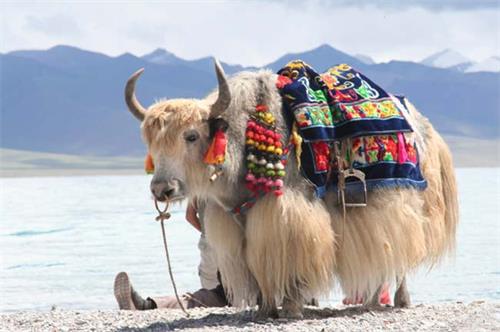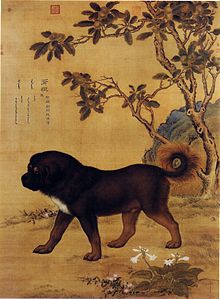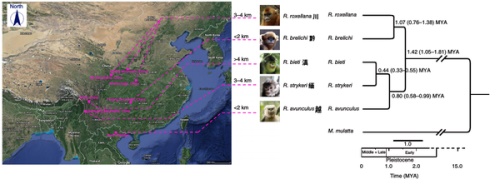Study on the mechanism of animal evolution on the plateau adapting to the environment of high altitude hypoxia
Different animals have different mechanisms. In fact, as far as human beings are concerned, the adaptation of different plateau people is different, not to mention different species. See: What mechanism does humanity living in the plateau adapt to the environment of hypobaric hypoxia? Snow Mountain Elephant's answer Hypoxia caused by low pressure is the biggest obstacle to the adaptation of the plateau environment. In higher animals, the core pathway regulating the response to hypoxic conditions is the HIF (Hypoxia-inducible factors) signaling pathway. The key protein of this pathway is the HIF protein family, including multiple members, but the most important and functionally the most important is the HIF1 protein. Each member of the HIF protein family is composed of two subunits, alpha and beta. These two subunits are encoded by different genes. For example, the two subunits of HIF1 protein are respectively HIF1A and ARNT ( HIF1B ). Gene coding. Only two subunits are combined to form a functional nuclear transcription factor, which then regulates a cascade of downstream genes involved in hypoxia, including erythropoiesis, neovascularization, vasodilation, nitric oxide synthesis, and cellular respiration. Wait. In order to respond quickly to sudden hypoxia events, the regulation of HIF1 protein is very unique. First, regardless of hypoxia or not, the constant expression and translation of the HIF1B gene allows a large amount of HIF1B protein (beta subunit) to accumulate in cells. However, although the HIF1A gene is equally constantly expressed and translated, the HIF1A protein (apha subunit) cannot accumulate in cells. Because the PHD complex monitors the intracellular oxygen content, the PHD complex transmits a signal to the ubiquitin complex composed of VHL and other genes, and degrades the translated alpha subunit, making it unable to interact with the beta subunit. Binding to form a functional HIF1 protein (as shown in the figure below). However, in the absence of oxygen, the PHD complex is inhibited and the alpha subunit accumulates immediately and binds to the beta subunit. The main purpose of this mechanism is to eliminate the time of transcriptional translation and protein accumulation in the case of sudden hypoxia, and rapidly form a functional HIF1 protein. The Tibetan mastiff is a kind of dog. Like other dogs, it belongs to the domesticated subspecies of the gray wolf. By comparing Tibetan mastiffs and dogs at different altitudes, including plain dogs, Yunnan dogs living at 2000-3000 meters above sea level, Qinghai Tibetan mastiffs at 4000 meters, and Tibet Tibetan mastiffs at 5,000 meters, it was found that the EPAS1 gene and HBB gene of Tibetan Mastiff were strongly selected. . EPAS1 is a gene encoding the HIF2 protein alpha subunit of the HIF family and belongs to the core pathway of hypoxia response. HBB is a gene encoding the hemoglobin beta chain responsible for oxygen transport. A total of four amino acids have been mutated between the high-profile EPAS1 gene and the plain type, and experiments have shown that these mutations may be associated with reduced vascular resistance and blood flow. Many dogs living at higher altitudes have a far-reaching difference between the whole genome and Tibetan mastiff, but the genotype of EPAS1 is consistent with Tibetan mastiff. It may be that the dog obtained the plateau-adaptive genes by crossing with Tibetan mastiff, and then these genotypes were fixed in the population. . Laparoscopic Surgery Instruments We're professional laparoscopy surgical instruments manufacturers and
suppliers in China, specialized in providing high quality medical
instruments with reasonable price. We warmly welcome you to buy or
wholesale bulk laparoscopy surgical instruments for sale here and get
quotation from our factory. Laparoscopic Surgery Instruments,Laparoscopic Instruments,Laparoscopy Equipment,Laparoscopic Tools Tonglu WANHE Medical Instrument Co., Ltd , https://www.vanhurhealth.com
At present, the study of the plateau adaptation mechanism of animals mainly compares the physiological and genetic differences between plateau species and their close relatives. Since not all species can find the corresponding close relatives of the plains, and not all plateau animals have relatively high research value, the animal plateau adaptation study is not very much. The species currently studied include the following:
Yak: 
The yak evolved from the yellow cattle on the plain, and the yak and the yellow cattle are very close, they do not form reproductive isolation, which means that the offspring produced by the cross between the yak and the yellow cattle are fertile, and in Nepal and Tibet There are indeed a large number of hybrid cattle in other places. Comparing the genomes of yellow cattle and yak, the possible mechanism of yak plateau adaptation can be obtained. It has been found that many of the genes related to hypoxia stress in yak are naturally selected, including HIF signaling pathway, aerobic respiration, angiogenesis, and blood vessel size regulation. These are naturally selected functions and transport and utilization of oxygen. Related. Key genes that are strongly selected by nature include ADAM17, ARG2 and MMP3 . Both ADAM17 and ARG2 regulate the function of HIF1A gene, which mainly affects the stability of HIF1A protein. ARG2 is also an important gene responsible for the regulation of nitric oxide synthesis. In living organisms, the most important function of nitric oxide is vasodilation and inhibition of red blood cell agglutination, which are all related to oxygen transport. In addition, nitric oxide also promotes HIF1 signaling, and HIF1 promotes nitric oxide production; nitric oxide inhibits PHD protein and promotes HIF1 protein accumulation. MMP3 is a downstream gene of HIF1 signaling and is involved in many biological processes, including neovascularization. In conclusion, the plateau adaptation of yak is mainly related to HIF1 signaling and nitric oxide regulation.
The yak genome and adaptation to life at high altitude : Nature Genetics : Nature Research
Tibetan Mastiff and Tibetan Grey Wolf: 
Tibetan grey wolf is a wild subspecies of grey wolf. By comparing Tibetan grey wolf and plain grey wolf, it is found that the three genes of EPAS1 , ANGPT1 , and RYR2 of Tibetan grey wolf are strongly selected. ANGPT1 is an angiopoietin responsible for neovascularization and is a downstream gene of HIF1 signaling; RYR2 is associated with cardiac function. In summary, canines generally adapt to the high altitude environment by regulating the HIF pathway and downstream oxygen transport-related genes.
Whole-genome sequencing of six dog breeds from continuous altitudes reveals adaptation to high-altitude hypoxia
PLOS Genetics: Hypoxia Adaptations in the Grey Wolf (Canis lupus chanco) from Qinghai-Tibet Plateau
Golden Monkey: 
The monkey family of the monkey family, the monkey family, can be collectively referred to as the golden monkey, and includes five species with close kinship, all of which are endangered primates. Their habitats vary in altitude and are ideal for studying plateau adaptation. Among them, the golden monkey and the golden monkey live below 2000 meters above sea level. The golden monkey and the burmese monkey live at an altitude of 2,000 to 4,000 meters, and the golden monkey lives at an altitude of 4,000 meters. A total of six genes related to the adaptation of the three golden monkeys in Sichuan and Myanmar were detected: RNASE4 , CDT1 , ARMC2 , NT5DC1 , RTEL1 , DNAH11 . These are generally related to angiogenesis, DNA repair, and lung function. 
In order to confirm the function of these genes, the researchers specifically compared the difference between the high-profile prototypes of RNASE4 and CDT1 and the plain-type function. There are two amino acid differences between the high prototype of RNASE4 and the plain type. The 89th amino acid is asparagine in other mammals and the two golden monkeys, but it is mutated in three golden monkeys. It became lysine; at 128th position, it was threonine in two mammals and other two golden monkeys, but it was mutated to isoleucine in three golden monkeys. Using human venous epithelial cells as experimental subjects, it was found that a high RNASE4 prototype can effectively improve the angiogenic ability of venous epithelial cells. Experiments have shown that the high RNASE4 prototype can increase the ability of angiogenesis, and the blood vessels naturally increase the oxygen supply capacity. The main function of CDT1 is DNA repair. There is only one amino acid difference between the high prototype and the plain type, that is, the amino acid 537 is abruptly changed from alanine to proline. Using the human Hella cell line as a test object, it was found that the high-profile CDT1 can effectively resist the damage caused by ultraviolet rays to the cellular DNA.
The distribution of different populations of Rhinopithecus roxellana was different. The differences in genotypes between different populations of Rhinopithecus roxellana and Rhinopithecus roxellana were studied. The researchers also detected the plateau adaptation genes unique to different populations. BRCC3 and RYR2 are plateau-adaptive genes shared by the golden monkey and the high-altitude Rhinopithecus monkey. The functions are DNA repair and cardiac function. ATR is a unique plateau adaptation gene of the golden monkey, which can regulate the expression of HIF1A , and experiments have confirmed that ATR is indeed associated with hypoxia tolerance. ARNT (also known as HIF1B) is a plateau-adaptive gene unique to high-altitude Rhinopithecus roxellana.
Genomic analysis of snub-nosed monkeys (Rhinopithecus) identifies genes and processes related to high-altitude adaptation : Nature Genetics : Nature Research
In addition, there are some other species of research results, not listed one by one. In general, plateau adaptation always falls on the HIF signal of the hypoxia core pathway as well as the downstream pathway, including hemoglobin function, vascular function, cellular respiratory function, and nitric oxide synthesis. After all, the core of altitude adaptation is hypoxia adaptation, which naturally depends on the HIF pathway.
